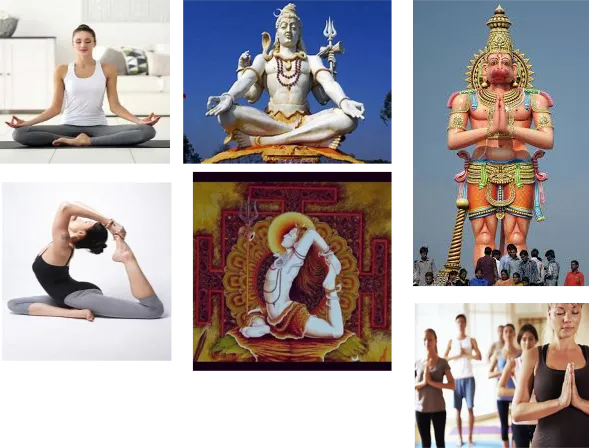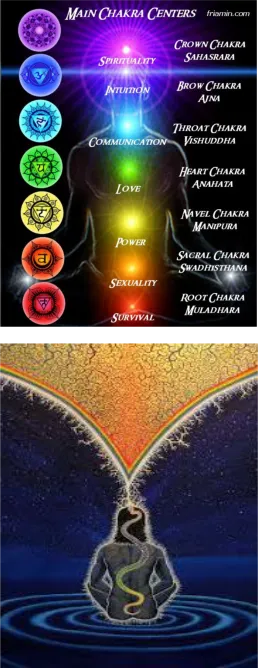Bible Studies

YOGA
It is estimated as of 2016 that there are over 36 million yoga practitioners in America. Even more interesting is the number of professing Christians who practice yoga.
While many boast of its emotional and physical health benefits, we will discover that yoga is actually a religion, rooted in Ancient Hindu Practices.
That being said, the question becomes: should Christians participate in Yoga?
Prayerfully, this study will give you a clear understanding of what the Bible says, and bring clarity to this topic.
HISTORY OF YOGA
Yoga: 1 a Hindu theistic philosophy teaching the suppression of all activity of body, mind, and will in order that the self may realize its distinction from them and attain liberation 2 a system of physical postures, breathing techniques, and sometimes meditation derived from Yoga but often practiced independently especially in Western cultures to promote physical and emotional well-being. (www.merriam-webster.com)
It’s difficult to trace the roots of Yoga, because they have been scattered, and the very idea of Yoga and what it represents has been reinvented over time. However, there are Ancient suggestions of Yoga.
The origin of the word Yoga is Sanskrit and literally means to yoke or join. The word yoga, has been dated back to 1500 BCE, where it was found in the Vedas, India’s oldest writings of Hinduism and Sanskrit literature.
Unlike the exercises we understand to be yoga today, the ancient versions of yoga were based on meditation, spiritual and religious practices.
THE PURPOSE OF YOGA
According to Pantanjali’s Yoga Sutra, there is an 8-fold path to Yoga called Ashtanga (8 limbs). Each of these steps in considered a path to one goal, transcending the self to ultimate consciousness or oneness with the Universe.
1.Yama – Ethical standards and integrity.
2.Niyama – Self-discipline and spiritual observances.
3.Asana – Postures practiced to purify the body, develop discipline and concentration for meditation.
4.Pranayama – Breath control.
5.Pratyahara – Sensory transcendence or withdrawl of the mind.
6.Dharana – concentration. Slowing the thinking process by focusing on one object.
7.Dhyana – uninterrupted concentration. Being aware without focus.
8.Samadhi – The last stage where the meditator merges with their point of focus and transcends the Self totally. Realization to the divine-interconnectedness with all living things.
As you can see the 3rd path (ASANA-what is practiced today as yoga) is just one path that leads to another path and ultimately to what is believed to be ultimate consciousness or a god-like state (oneness with the universe).
HATHA YOGA
- Hatha Yoga was developed by Swami Swatamarama and is the most common form of yoga practiced today. According to yoga journal Hatha yoga refers to physical exercises (postures or asanas) created to align your skin, muscles and bones. It is also designed to open the many channels of the body, specifically the spine (main channel) so that energy can flow freely.
- The energy that is being referred to is known as Chakras.
Many say that these postures are strictly about exercise. As you can see in the pictures they resemble the postures of some of the Hindu gods.

WHAT DOES THE BIBLE SAY?
The deception of Yoga is that it opens you up to other philosophies under the guise of exercise or healthy living. The meditation, breathing, chanting etc, are all tools for relaxation of/or opening the mind to be filled or “enlightened” (this is the knowledge the serpent deceived the woman with in Genesis 3:1-5).
Colossians 2:8 See to it that no one takes you captive through hollow and deceptive philosophy, which depends on human tradition and the elemental spiritual forces of this world rather than on Christ. (NIV)
The very basis of Yoga is rooted in Hinduism which is a pantheistic religion.
Pantheism is 1: a doctrine that equates God with the forces and laws of the universe 2 : the worship of all gods of different creeds, cults, or peoples indifferently; also : toleration of worship of all gods.
Practicing the yoga poses, that resemble Hindu gods, is acknowledgement or toleration of other gods.
Deutoronomy 6:14 Ye shall not go after other gods, of the gods of the people which are round about you; (KJV)
CHAKRAS AND KUNDALINI
Chakras (translated wheel or disk) refers to the wheels of energy that flow through the body. There are seven main chakras that align the spine.
Ancient Practitioners of Yoga believe that all these portals of energy can be opened when you “awaken” the kundalini serpent located at the base of the spine.
Kundalini is derived from the Sanskrit word “kundal” which means coiled. Kundalini is known as the “serpent power” that supposedly nurtures the Tree of life within humans. This Serpent Power is a female energy that lives at the base of the spine.
Hindu/yoga practitioners believe that when the kundalini fire is awakened it coils up the spine and awakens the mind to a higher intelligence and open consciousness to altered states of awareness.

WHAT DOES THE BIBLE SAY ABOUT THE SERPENT?
Yoga refers to the Serpent as the divine power that brings enlightenment. However the bible defines the Serpent differently:
- Genesis 3:1 Now the serpent was more crafty than any of the wild animals the LORD God had made… (NIV)
- 2 Corinthians 11:3 – But I fear, lest by any means, as the serpent beguiled Eve through his subtlety, so your minds should be corrupted from the simplicity that is in Christ. (NIV)
- Revelation 12:9 And the great dragon was cast out, that old serpent, called the Devil, and Satan, which deceiveth the whole world: he was cast out into the earth, and his angels were cast out with him.
Understand, that Satan will go through great lengths to deceive. If he can transform himself into angel of light (2 Corinthians 11:14) is it not possible for him to hide the deeper philosophies of practicing yoga under the cloak of “exercise” and a “healthy lifestyle”?
We are never instructed to open ourselves to be “enlightened” by the devil but rather to resist him. (James 4:7) and to stand against him (Ephesians 6:11).
YOGA TERMINOLOGY
Yoga: From the Sanskrit “yug” (yoke), means “union”.
joining or connecting one entity to another,
merging one entity into another,
implementation of an entity or idea or person.(Abloh, 2018)
Guru: A Teacher or master; one who illuminates the darkness.
OM (or Aum): Considered to be the first sound of creation. Om is frequently chanted before, after and/or during yoga classes.
- Pranayama: Breath awareness that enables inner stillness.
- Hatha Yoga: From “ha” (sun) and “tha” (moon), hatha yoga seeks to unify opposites – body and mind – also describes any of the physical practices of yoga.
- Asanas (seat): The physical postures of yoga.
- Mantra: Sounds, syllables, words or groups of words that are repeated with the goal of creating a positive transformation; a sacred thought or a prayer.
- Meditation: Centering and calming the mind most often through breath work to reach deeper stages of consciousness.
- Mudra: (a seal) Positions of the body that influence the energies of the body, or mood. Mostly the hands and fingers are held in a mudra.
- Namaste: Commonly said at the end of yoga class by the instructor and the students.
- Nama (bow), as (I), and te (you). Namaste plainly means “bow me you” or “I bow to you.”
WHAT DOES THE BIBLE SAY ABOUT BEING YOKED?
The word Yoga actually means to join or to yoke. In Yoga, it is speaking of the liberation from the bondage of the body, to the oneness of divine enlightenment or universal consciousness.
However, the bible gives us clear direction on who we should and should not yoke ourselves to.
- 2 Corinthians 6:14 Be ye not unequally yoked together with unbelievers: for what fellowship hath righteousness with unrighteousness? And what communion hat light with darkness?
- Galatians 5:1 Stand fast therefore in the liberty wherewith Christ hath made us free, and be not entangled again with the yoke of bondage.
We as beleivers are told to take God’s yoke:
- Matthew 11:29-30 Take my yoke upon you, and learn of me; for I am meek and lowly in heart: and ye shall find rest unto your souls. For my yoke is easy, and my burden is light.
We have to be careful when we participate in activities that are rooted in other philosophies. Sometimes our participation suggests we agree with the philosophy or belief systems of the activity.
WHAT DOES THE BIBLE SAY ABOUT MEDITATION?
Meditation is one of the methods that is used in Yoga, to center or calm the mind by controlling the breath.
Job 34:14-15 If it were his intention and he withdrew his spirit and breath, all humanity would perish together and mankind would return to dust.
Our very breath is given to us by God, we can’t control it because it’s an involuntary action. The minute we start trying to control our breath for the purpose of attaining a oneness with the universe, we have bought into the lie of the devil that we can become like gods.
Not only that the bible gives us clear direction on meditation and on what we should be meditating.
- Psalm 119:15-16 I will meditate in thy precepts, and have respect unto thy ways. I will delight myself in thy statutes: I will not forget thy word.
- Also see Joshua 1:8; Psalms 77:12 ; Philippians 4:8
Likewise, we are also instructed where to focus our minds:
- Isaiah 26:3 Thou wilt keep him in perfect peace whose mind is stayed on thee; because he trusteth in thee.
- Romans 12:2 And be not conformed to this world, but be ye transformed by the renewing of your mind, that ye may prove what is that good, and acceptable and perfect, will of God.
- Also see Romans 12:16; Philippians 2:5; Matthew 22:37
We are never instructed to meditate for the purpose of focusing or clearing the mind. We are instructed to meditate on the goodness and principles of God, and to have the mind of Christ. This is the way we grow in faith, and ensure good success.
WHAT DOES THE BIBLE SAY?
About Mantras (Chants)
Mantras are words used repeatedly with the goal of creating a positive transformation; a sacred thought or a prayer.
- Matthew 6:7-8 But when ye pray, use not vain repetitions, as the heathen do: for they think that they shall be heard for their much speaking. Be not ye therefore like unto them: for your Father knoweth what things ye have need of, before ye ask him.
- 1 Timothy 6:20 Timothy, guard what has been entrusted to your care. Turn away from godless chatter and the opposing ideas of what is falsely called knowledge (NIV)
- Ephesians 5:6-7 Let no man deceive you with vain words: for because of these things cometh the wrath of God upon the children of disobedience, Be not ye therefore partakes with them.
We are never instructed to use mantras or chants as a method of prayer. We are instructed not to pray using vain repetitions, we are also instructed to turn away from godless chatter and people who oppose the gospel with what they call “knowledge” (Genesis 3:5)
FINAL THOUGHTS
Although many people claim the health benefits of Yoga, it is important to understand that Yoga, is a philosophical practice rooted in Hinduism. It is found in the ancient Vedas which are considered the Hindu scriptures.
Practicing Yoga even from just a physical standpoint displays a certain amount of faith in what it claims. However, as we have learned Yoga’s ultimate claim is that this practice will eventually awaken you to a place of god like status, where you become one with the universe.
Even the adaptation of “Christian Yoga” implies that Yoga would have to represent some other form of religion or belief system.
We are to be on guard so that we are not ignorant of Satan’s devices. He will disguise himself behind any and everything, but his ultimate goal is to draw you away from the only True God unto himself.
There is only one God, He is the God of Truth and Love. The only other option is to believe the lie.
Genesis 3:4-5 And the serpent said unto the woman, Ye shall not surely die: For God doth know that in the day ye eat thereof, then your eyes shall be opened, and ye shall be as gods, knowing good and evil.
You can only serve one God. God is merciful in that he allows you to choose.
Matthew 6:24 No man can serve two masters: for either he will hate the one, and love the other; or else he will hold to the one, and despise the other: Ye cannot serve God and mammon.
The decision to practice Yoga, is yours alone.
THE DIFFERENCE BETWEEN YOGA AND STRETCHING
YOGA
- Yoga is more than just physical movement. It claims to produce changes in life perspective, increased self-awareness, improved energy and enlightenment
- In order for postures to be considered yoga, there has to be a balance of steadiness and alertness, as well as comfort and ease in the mind, body and breath of the practitioner.
- Yoga has a historical (including philosophical and religious) background.
- Yoga is recognized by the National Institute of Health as a mind-body medicine.
STRETCHING
- Stretching involves pulling or putting your limbs in positions to make the muscles long and tight.
- Simple stretching of the limbs or particular muscles does not require the same level of attention, focus and breathing that yoga postures require.
- Stretching has no historical background.
REFERENCES
- PR Newswire: press release distribution, targeting, monitoring and marketing. (2016, January 13). Retrieved from https://www.prnewswire.com/news-releases/2016-yoga-in-america.
- What Is Yoga, Really? (n.d.). Retrieved from http://www.yoganandasrf.org/What_Is_Yoga,_Really_.aspx#.WrHgheSG9Mt
- Carrico, M. (2007, August 28). The 8 Limbs of Yoga. Retrieved from www.yogajournal.com
- Marnica, N. (2018). Yoga Vs. Stretching: What’s The Difference?. [online] Fitness Republic. Available at: https://www.fitnessrepublic.com/fitness/yoga-vs-stretching-whats-the-difference.html [Accessed 7 May 2018].
- Burgess, L. (2018). Common Yoga Terms Defined. [online] ACTIVE.com. Available at: https://www.active.com/fitness/articles/common-yoga-terms-defined [Accessed 7 May 2018].
- Das, S. (2018). What Does the Indian Gesture of ‘Namaste’ Really Mean?. [online] ThoughtCo. Available at: https://www.thoughtco.com/what-does-namaste-mean-1770004 [Accessed 7 May 2018].
- “Pantheism.” Merriam-Webster.com. Merriam-Webster, n.d. Web. 6 May 2018.
- “Polytheism.” Merriam-Webster.com. Merriam-Webster, n.d. Web. 6 May 2018.
- “Yoga.” Merriam-Webster.com. Merriam-Webster, n.d. Web. 6 May 2018.
- Abloh, R. (2018). What does the word yoga mean in sanskrit. [online] quora. Available at: https://www.quora.com/What-does-the-word-yoga-mean-in-Sanskrit [Accessed 7 May 2018].
